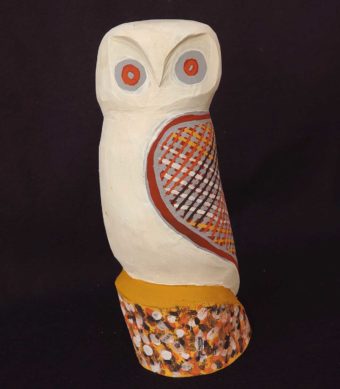 Romolo Tipiloura | Owl TurutjikiniJap 013182 | carved wood & ochre | height 34 cm
Sold
| 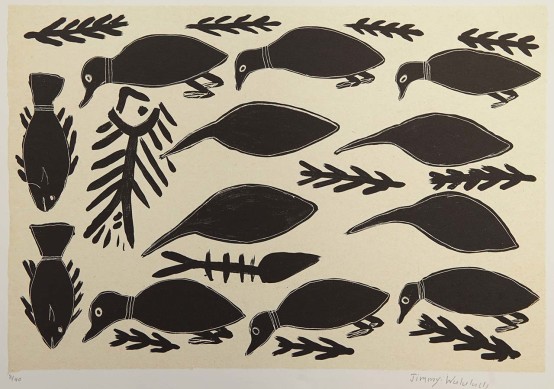 Jimmy Wululu | Birds and FishJap 012148 | lithograph | 51 x 38 cm
Sold
|  Fiona Omeenyo | Flying OverJap 012435 | acrylic on canvas | 110 x 86 cm
Sold
| 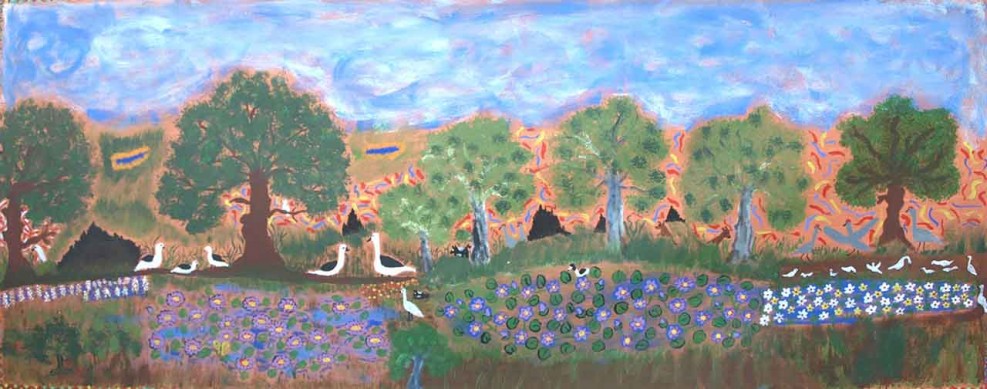 Rebecca Wolmby | Small Lake near TiichJap 007041 | acrylic on canvas | 144 x 59 cm
Sold
| 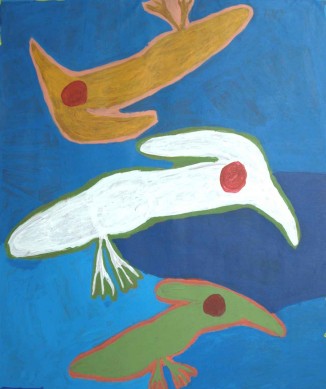 Peggy Jones | Three BirdsJap 007170 | acrylic on canvas | 71 x 60 cm
Sold
| 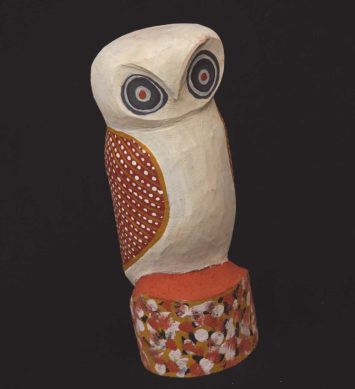 Romolo Tipiloura | Owl TurutjikiniJap 013183 | carved wood & ochre | height 32 cm
Sold
| 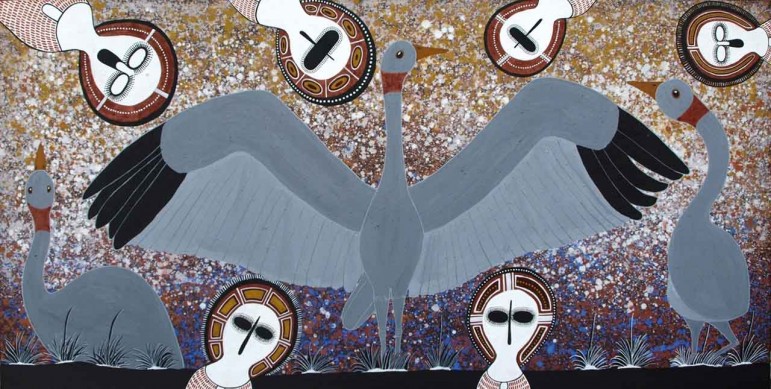 Kirsty Burgu | Brolga DanceJap 007477 | ochre on canvas | 140 x 70 cm
Sold
|  Kumana Goodwin | Tjulpu – BirdJap 009193 | Western Myall & Salmon gum
Sold
| 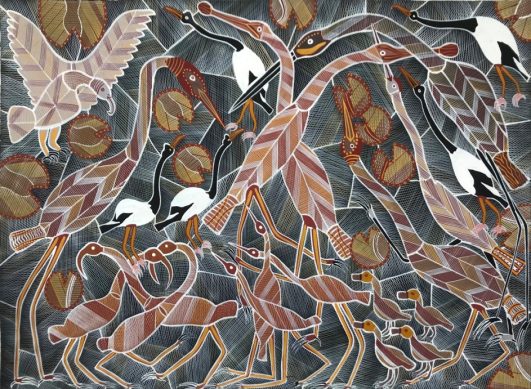 Edward Blitner | Water Birds – Freshwater BillabongJap 015327 | acrylic on canvas | 136 x 99 cm
Sold
| 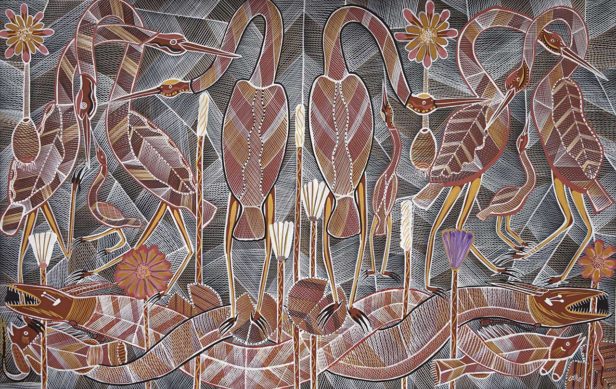 Edward Blitner | Brolgas with Yingana and Ngalyod, Rainbow SerpentsJap 014385 | acrylic on canvas | 150 x 90 cm
Sold
| 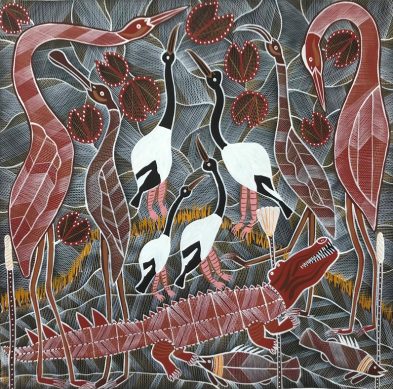 Edward Blitner | Magpie Geese and BrolgasJap 015328 | acrylic on canvas | 97 x 95 cm
Sold
|  Simon Lobo Badari | Waterbird, Fish, StingrayJap 010639 | ochre on paper | 153 x 102 cm
Sold
| 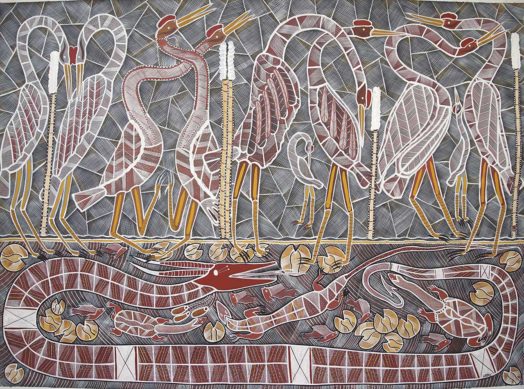 Edward Blitner | Brolgas and Rainbow SerpentJap 014301 | acrylic on canvas | 208 x 150 cm
Sold
|  Romolo Tipiloura | OwlJap 010537 | carved wood & ochre | height 43 cm
Sold
|  John Tipungwuti | Water BirdJap 010556 | carved wood & ochre | height 70 cm
Sold
| 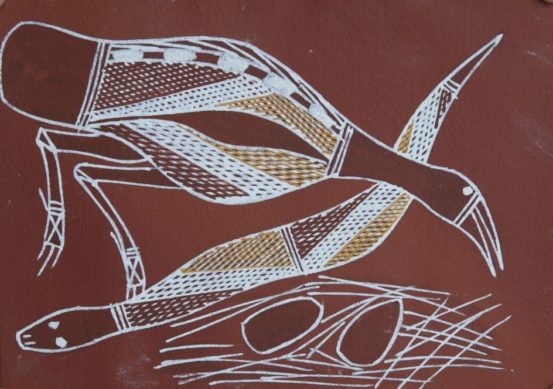 Billy Namundja | Bird and SnakeJap 010649 | ochre on paper | 29 x 21 cm
Unavailable
| 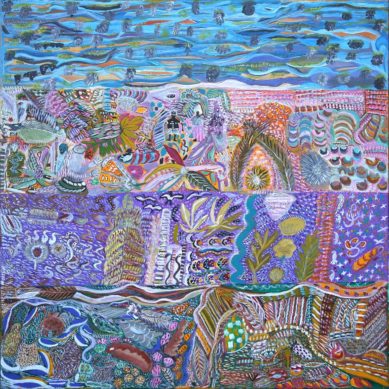 Maureen Thompson | Coast at Limmen BightJap 010516 | acrylic on linen | 120 x 120 cm
Sold
| 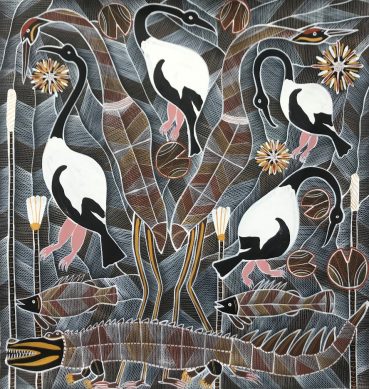 Edward Blitner | Magpie Geese and BrolgasJap 015329 | acrylic on canvas | 97 x 96 cm
Sold
| 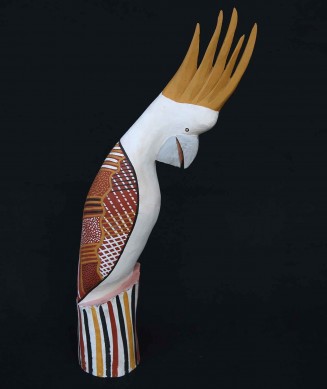 Thomas Munkanome | CockatooJap 010550 | carved wood & ochre | height 68 cm
Sold
| 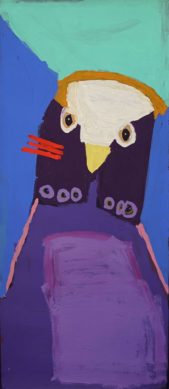 Karen Napaljarri Barnes | Ngatijirri Budgerigar DreamingJap 013363 | acrylic on linen | 107 x 46 cm
Sold
| 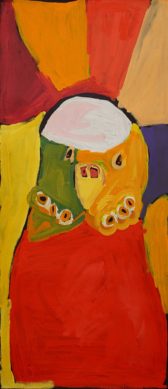 Karen Napaljarri Barnes | Ngatijirri Budgerigar DreamingJap 013361 | acrylic on linen | 107 x 46 cm
Sold
| 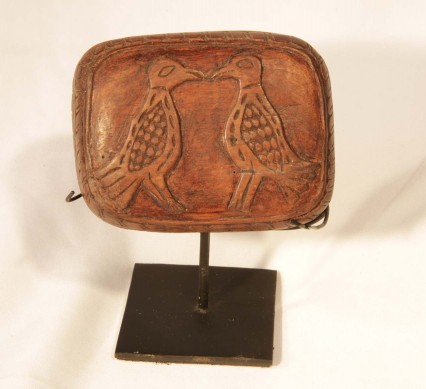 Timor Carving | Box with carved birdsJap 009872 | local wood | length 27 cm
Sold
| 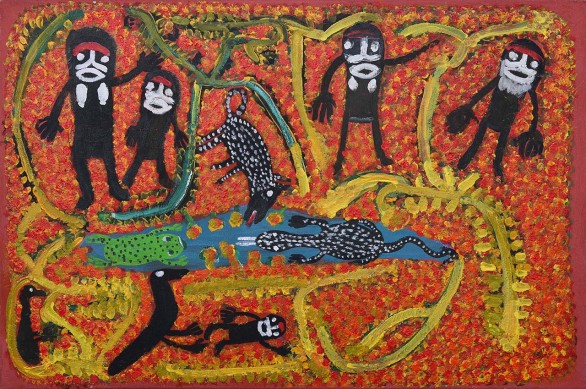 Mary McLean | Happy Camp by the Spring CreekJap 008781 | acrylic on canvas | 90 x 60 cm
Sold
| 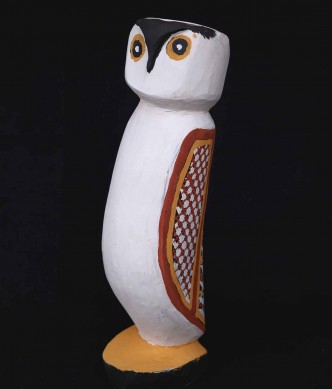 Romolo Tipiloura | Tiwi Masked OwlJap 010558 | carved wood & ochre | height 54 cm
Sold
| 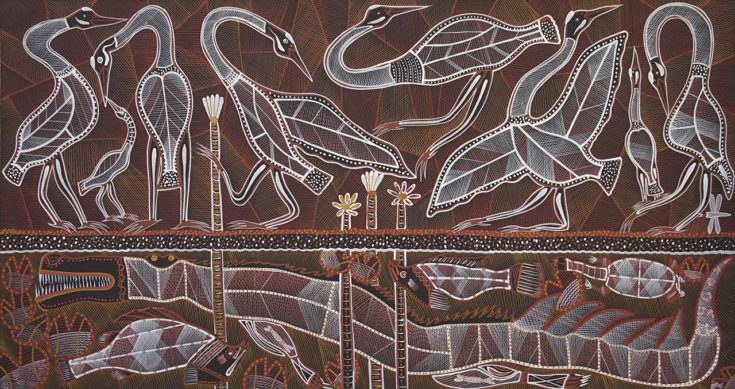 Edward Blitner | Crocodile DreamingJap 014373 | acrylic on canvas | 184 x 100 cm
Sold
| 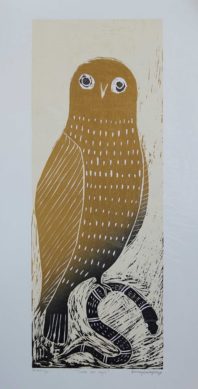 Donny Woolagoodja | Dumbi and UnguddJap 017576 | limited edition woodblock print | 36 x 76 cm
Unavailable
|  Jane Mervin | The OwlJap 007843 | acrylic on canvas | 30 x 30 cm
Sold
| 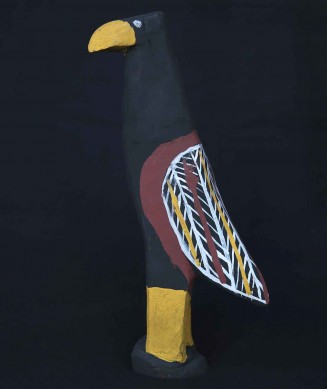 Bede Tungatalum | Sea EagleJap 010545 | carved wood & ochre | height 38 cm
Sold
| 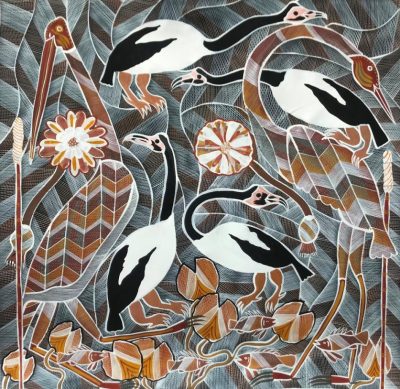 Edward Blitner | Magpie Geese and BrolgaJap 015330 | acrylic on canvas | 97 x 96 cm
Sold
| 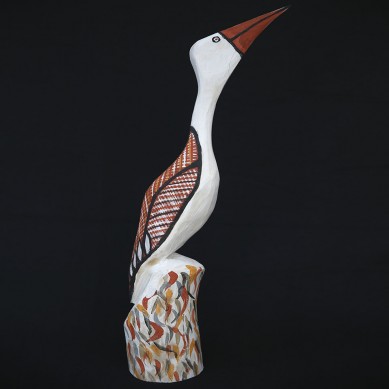 Michael Munkara | Water BirdJap 010559 | carved wood & ochre | height 77 cm
Sold
| 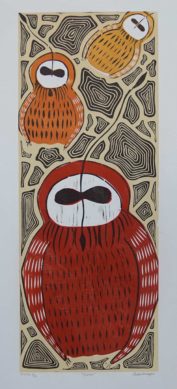 Cecilia Umbagai | Dumbi Mama – Sacred OwlJap 017569 | limited edition woodblock print | 37 x 76 cm
Sold
| 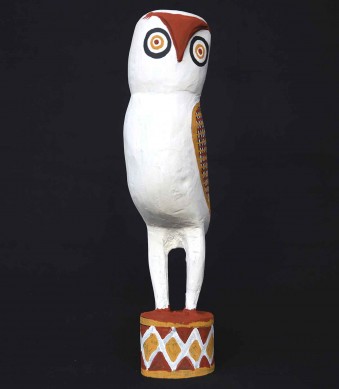 Romolo Tipiloura | OwlJap 010538 | carved wood & ochre | height 48 cm
Sold
| 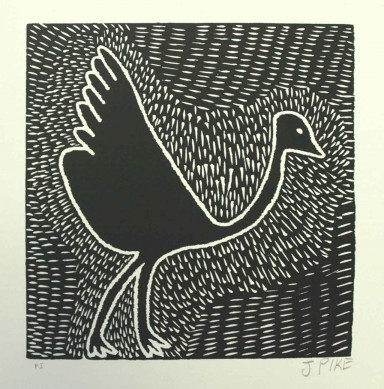 Jimmy Pike | Pirnini CountryJap 008220 | limited edition silkscreen | 32 x 31 cm
Sold
| 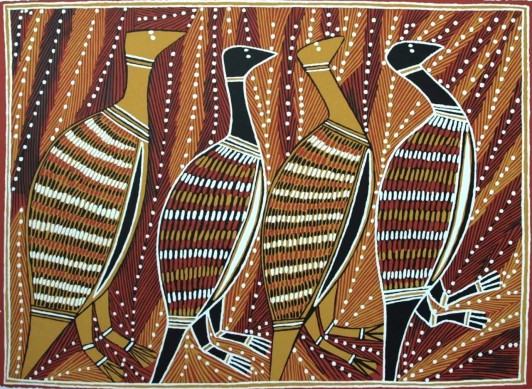 George Milpurrurru | Diving Duck – GurrupuduJap 007132 | Silk Screenprint | 79 x 56 cm
Sold
| 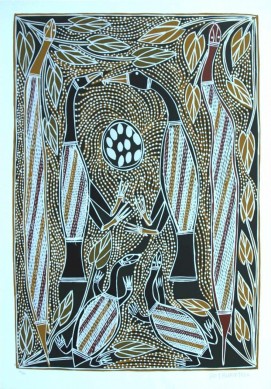 Roy Burrunyula | Magpie Geese – Swamp DreamingJap 008197 | limited edition silkscreen | 62 x 43 cm
Sold
| 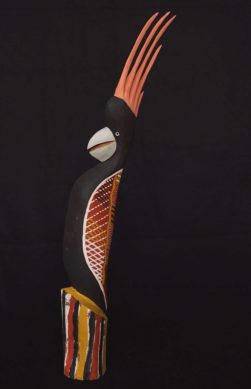 Thomas Munkanome | CockatooJap 012929 | carved wood & ochre | height 74 cm
Sold
| 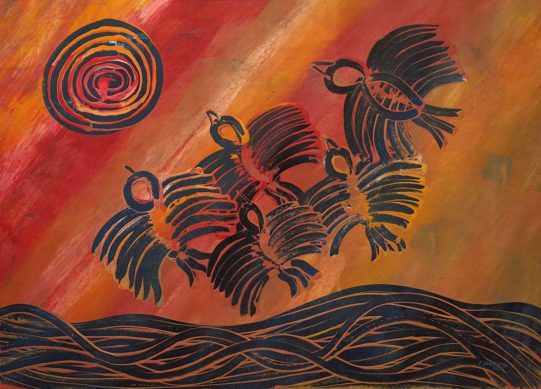 Fiona Omeenyo | Travelling OnJap 013695 | acrylic on canvas | 120 x 87 cm
Add To Enquiry Cart ► How To buy
| 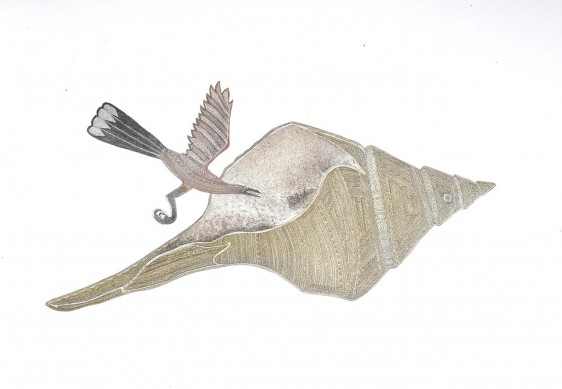 Dennis Nona | Bu Ka Palgie – Shell & BirdJap 008896 | limited edition etching | 30 x 60 cm
Sold
| 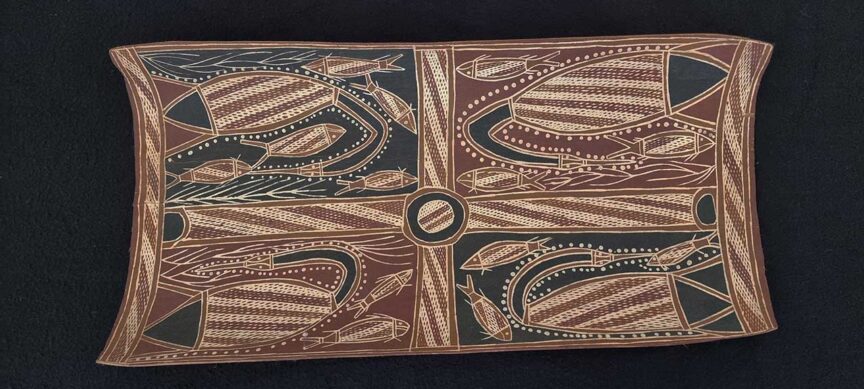 Anarargayara | Bark PaintingJap 023194 | ochre pigments on bark | 65 x 30 x 7 cm
Add To Enquiry Cart ► How To buy
|  Romolo Tipiloura | Owl TurutjikiniJap 012925 | carved wood & ochre | height 36 cm
Sold
| 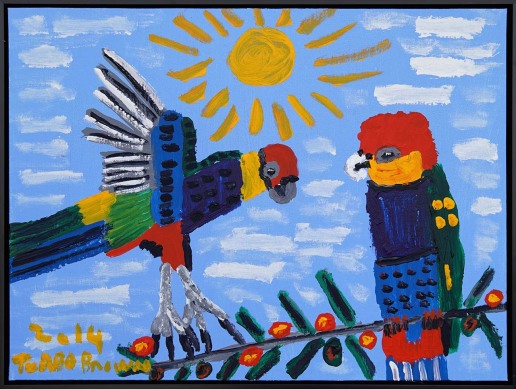 Turbo Brown | Two ParrotsJap 011394 | acrylic on board, framed | 61 x 46 cm
Sold
| 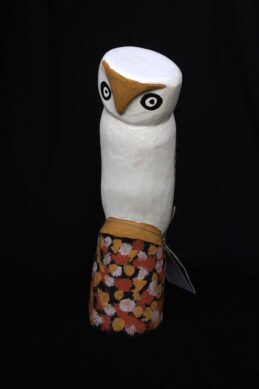 Immaculata Tippiloura | OwlJap 023283 | ochre on Ironwood | 39 x 10 cm
Add To Enquiry Cart ► How To buy
| 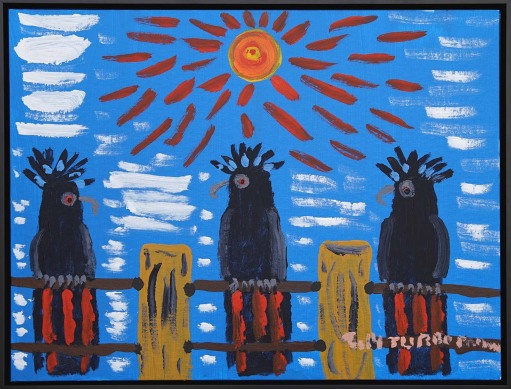 Turbo Brown | Black CockatoosJap 011395 | acrylic on board, framed | 61 x 46 cm
Sold
| 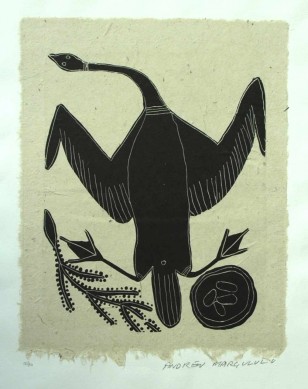 Andrew Margalulu | Diving DuckJap 008205 | limited edition lino print | 38 x 30 cm
Sold
| 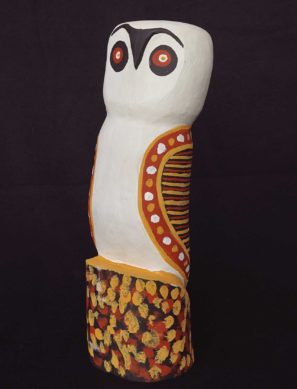 Romolo Tipiloura | Owl TurutjikiniJap 012920 | carved wood & ochre | height 48 cm
Sold
| 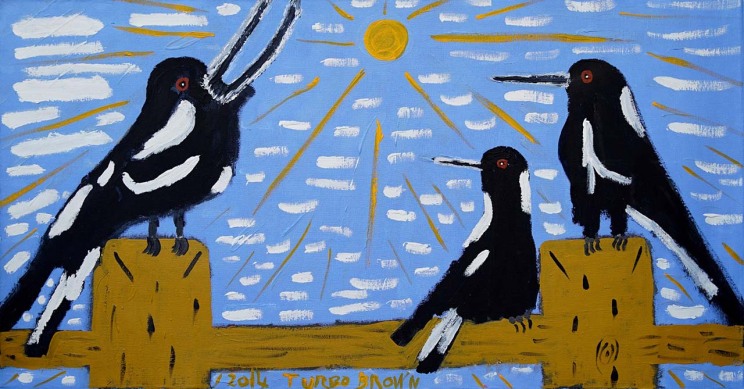 Turbo Brown | MagpiesJap 011396 | acrylic on linen | 116 x 62 cm
Sold
| 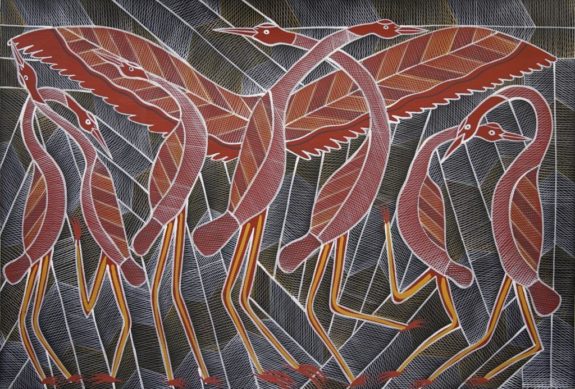 Edward Blitner | BrolgasJap 014230 | acrylic on canvas | 96 x 62 cm
Sold
| 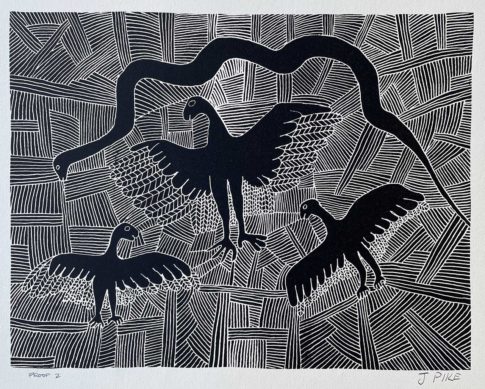 Jimmy Pike | Kirrkirr – Chicken HawkJap 018800 | limited edition screenprint | 31 x 40 cm
Add To Enquiry Cart ► How To buy
| 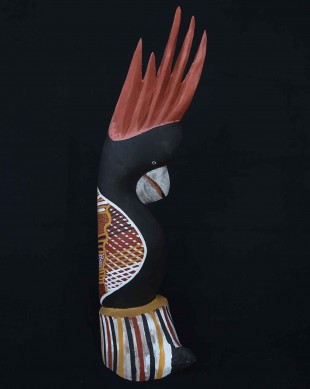 Thomas Munkanome | CockatooJap 010549 | carved wood & ochre | height 63 cm
Sold
| 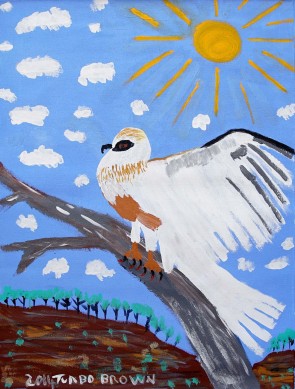 Turbo Brown | HawkJap 011397 | acrylic on linen | 99 x 75 cm
Sold
|  Romolo Tipiloura | OwlJap 010540 | carved wood & ochre | height 34 cm
Sold
| 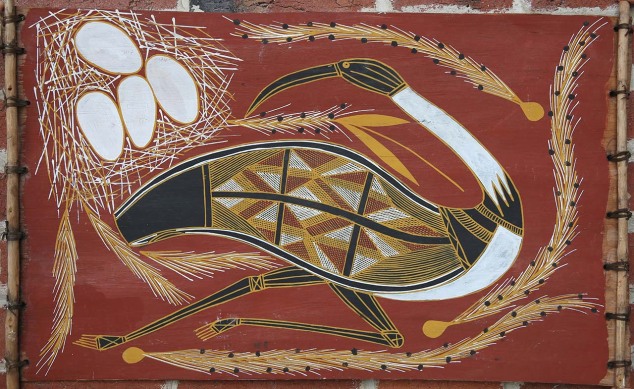 Roy Yilidjirri | Waterbird & NestJap 010637 | ochre on bark | 76 x 46 cm
Sold
|  Turbo Brown | KingfisherJap 012447 | acrylic on linen | 155 x 108 cm
Sold
| 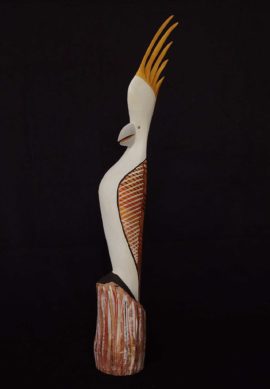 Roslyn Orsto | Kulama – White CockatooJap 012926 | carved wood & ochre | height 74 cm
Sold
| 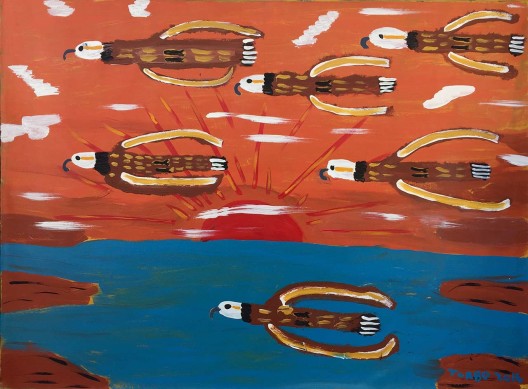 Turbo Brown | Sea EaglesJap 012532 | acrylic on linen | 121 x 91 cm
Unavailable
| 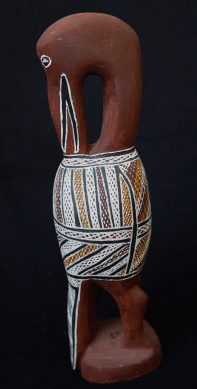 Yanjalka 2 Menja Mununjgurr | WayinJap 015703 | Carving | height 37 cm
Sold
| 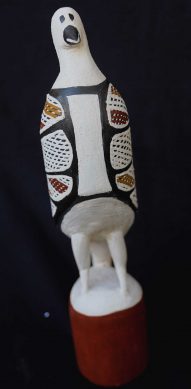 Naminapu Maymuru White | MurriyilJap 015706 | Carving | 44 x 9 cm
Sold
| 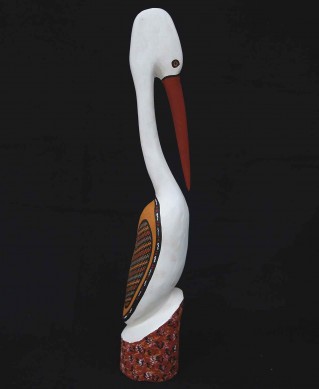 Mario Munkara | Water BirdJap 010552 | carved wood & ochre | height 72 cm
Sold
| 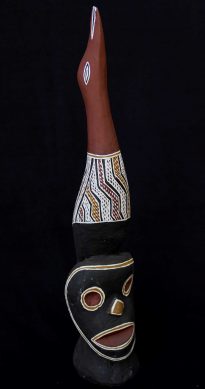 Napurrawuy 2 Wununjmurra Djapana | Wayin ga MokuyJap 015707 | Carving | height 59 cm
Sold
|  Turbo Brown | Two ParrotsJap 012219 | acrylic on linen | 122 x 92 cm
Sold
| 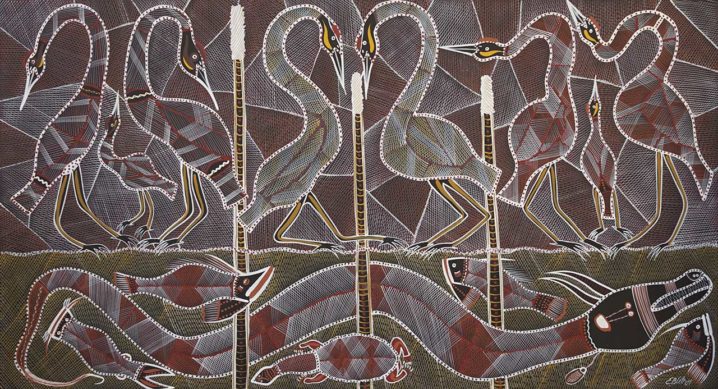 Edward Blitner | Brolgas with Yingana and Ngalyod, Rainbow SerpentsJap 014371 | acrylic on canvas | 184 x 100 cm
Sold
| 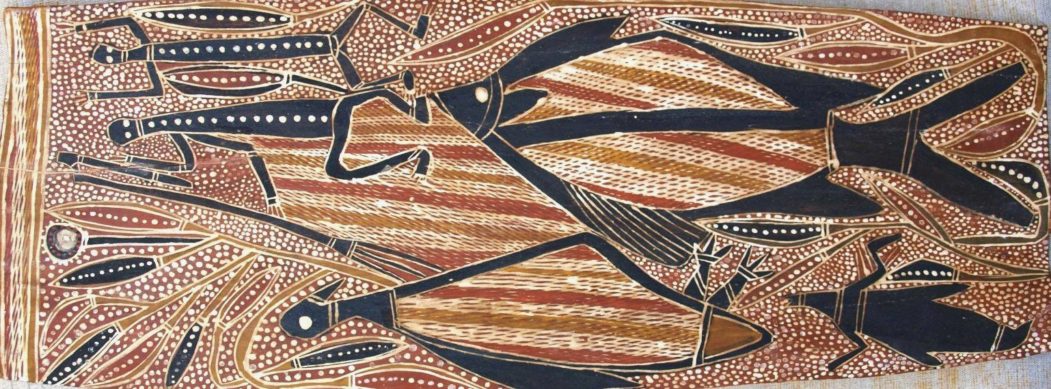 Mick Magani | Jinang from the mainland – MildjingiJap 005900 | bark | 64 x 25 cm
Sold
| 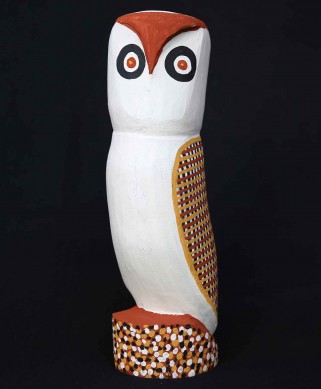 Romolo Tipiloura | OwlJap 010539 | carved wood & ochre | height 39 cm
Sold
| 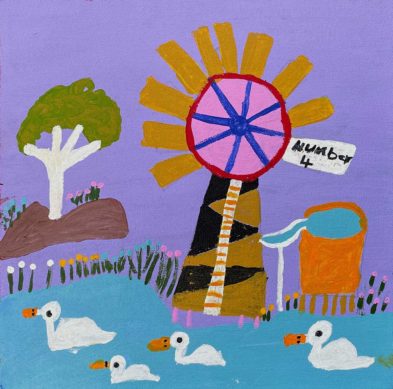 Gladys Anderson | Windmill Number 4Jap 019364 | acrylic on canvas | 30 x 30 cm
Sold
| 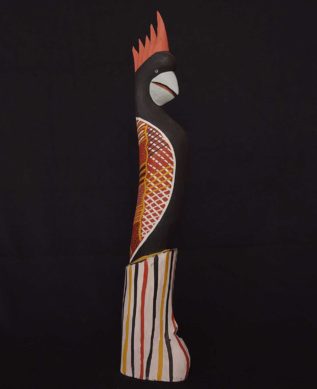 Thomas Munkanome | CockatooJap 012930 | carved wood & ochre | height 73 cm
Sold
| 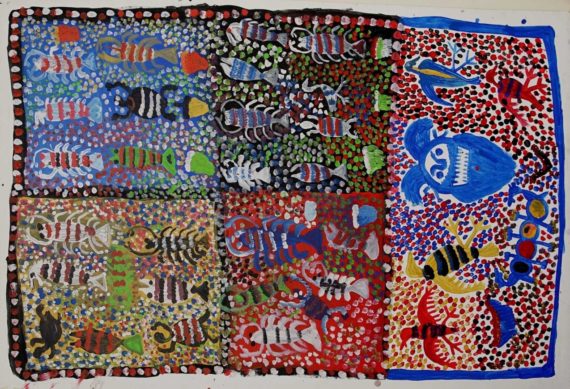 Willie Gudapi | Alawa StoryJap 012132 | acrylic on canvas | 128 x 84 cm
Add To Enquiry Cart ► How To buy
| 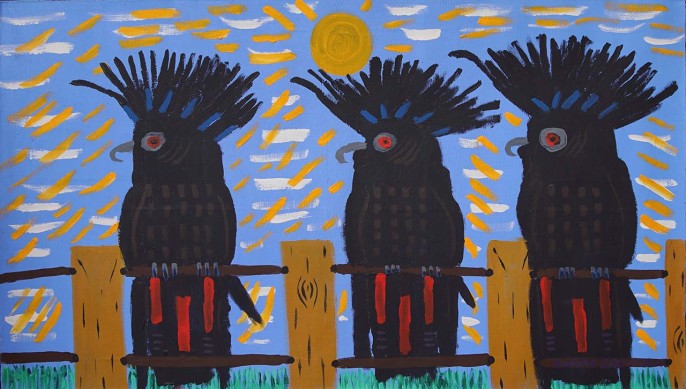 Turbo Brown | Red Tail CockatoosJap 012153 | acrylic on linen | 139 x 80 cm
Sold
| 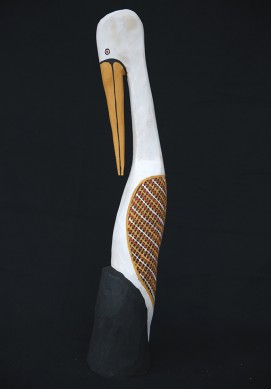 John Tipungwuti | Water BirdJap 010557 | carved wood & ochre | height 73 cm
Sold
| 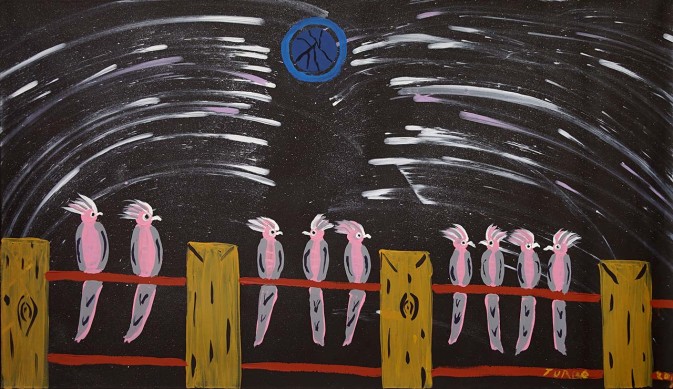 Turbo Brown | Galahs on Fence LineJap 012458 | acrylic on linen | 139 x 79 cm
Sold
| 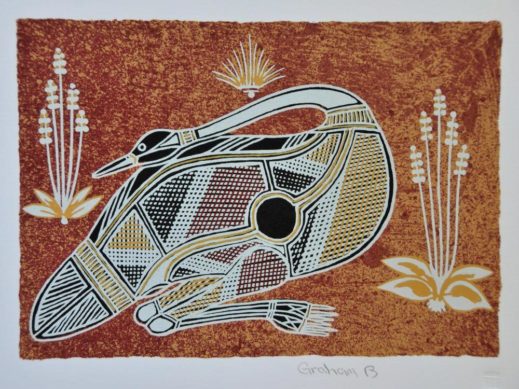 Graham Badari | Bush Turkey BenukJap 012490 | limited edition silkscreen | 17 x 23 cm
Unavailable
| 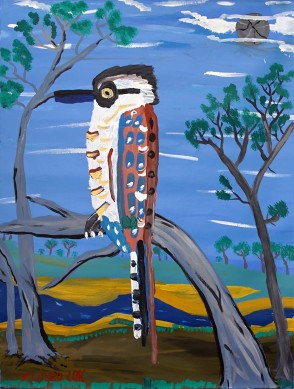 Turbo Brown | KookaburraJap 012460 | acrylic on linen | 120 x 91 cm
Sold
| 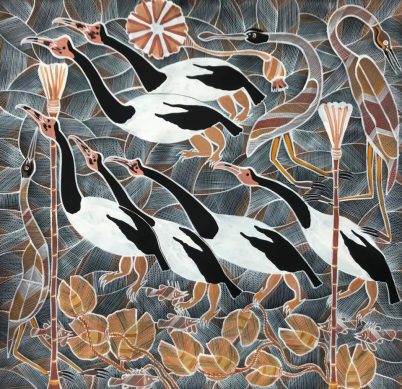 Edward Blitner | Magpie GeeseJap 015331 | acrylic on canvas | 97 x 96 cm
Sold
| 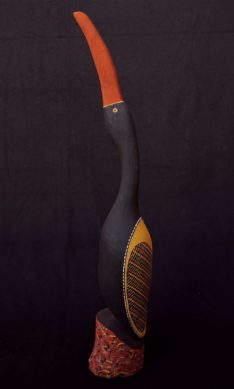 Mario Munkara | Tokapuwi – BirdJap 012946 | carved wood & ochre | height 80 cm
Sold
| 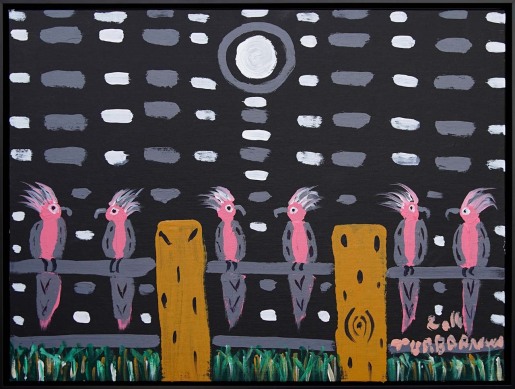 Turbo Brown | GalahsJap 011393 | acrylic on board, framed | 61 x 46 cm
Sold
| 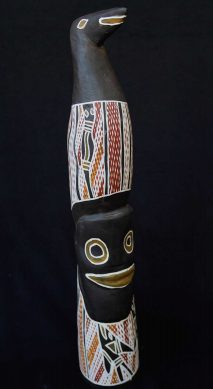 Warrinybal Yunupinju Jack | Wayin ga MokuyJap 015708 | Carving | 67 x 12 cm
Sold
|  Timor Carving | Totemic BirdJap 009876 | local wood | length 17 cm
Sold
|












































































